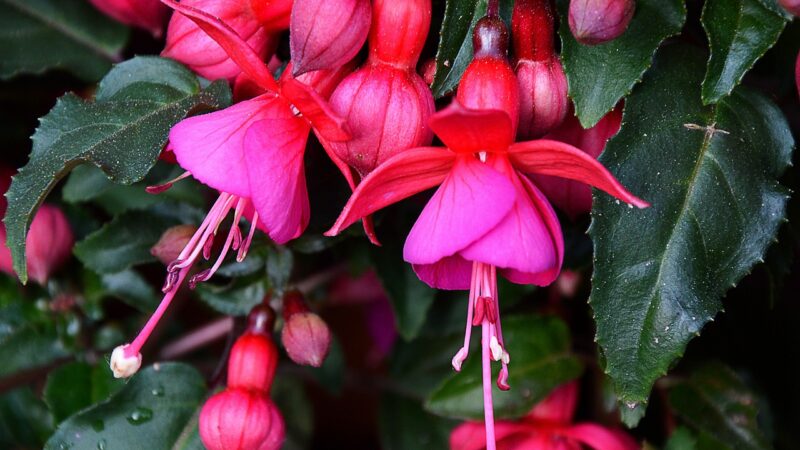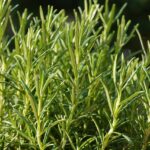The light requirements of fuchsia

Understanding and providing the correct light conditions is one of the most fundamental aspects of successful fuchsia cultivation. These plants have a distinct preference that sets them apart from many sun-loving summer annuals; they are, by nature, denizens of cooler, more temperate regions, often found in dappled woodland light. Consequently, they thrive not in the full, harsh glare of the midday sun, but in a more gentle and nuanced illumination. Achieving the perfect balance of light is crucial, as it directly influences the plant’s overall health, the lushness of its foliage, and, most importantly, the abundance and quality of its spectacular flowers.
The ideal light exposure for most fuchsia varieties is often described as ‘bright, indirect light’ or ‘dappled shade’. A location that receives several hours of gentle morning sunlight followed by shade during the hottest part of the afternoon is typically perfect. This combination provides enough light energy for vigorous photosynthesis and flower production without exposing the plant to the intense solar radiation that can cause stress and damage. An east-facing aspect is often ideal for achieving this balance, offering direct sun in the cooler morning hours and protection during the stronger afternoon sun.
Too much direct sunlight, particularly in warmer climates, can be detrimental to fuchsias. The intense light and associated heat can lead to a condition known as leaf scorch, where the foliage develops brown, crispy edges and patches. In extreme cases, the entire plant may wilt dramatically during the hottest part of the day as it loses moisture through transpiration faster than its roots can absorb it. This heat stress can also cause the plant to drop its flower buds and cease blooming altogether, as it diverts its energy into sheer survival.
Conversely, insufficient light presents its own set of problems. A fuchsia grown in deep shade will often become ‘leggy’, a term used to describe a plant with elongated, weak stems and sparse foliage. This is because the plant is stretching out in an attempt to find more light. While it may produce some leaves, a light-starved fuchsia will produce very few, if any, flowers. The energy derived from photosynthesis is simply not sufficient to support the demanding process of bud and bloom formation, resulting in a disappointing and purely vegetative display.
Adapting light conditions for different fuchsia types
While the general rule of morning sun and afternoon shade holds true for many fuchsias, it is important to recognize that not all varieties have identical light requirements. The vast world of fuchsias encompasses a wide range of species and hybrids, some of which are more tolerant of sun than others. For instance, many of the newer hybrid varieties, particularly those with lighter-colored flowers such as whites, pinks, and pastels, tend to be more sensitive to strong sun and will show signs of scorching more readily.
More articles on this topic
In contrast, some fuchsia species and hybrids, especially those with darker red and purple flowers, often exhibit a greater tolerance for sun and heat. Varieties like Fuchsia magellanica and some of the Triphylla-type hybrids can often handle more direct sunlight, provided they are given consistently moist soil to compensate for the higher rate of transpiration. However, even for these more sun-tolerant types, protection during the most intense afternoon heat is still beneficial, particularly in regions with very hot summers.
The growth habit of the fuchsia can also influence its ideal placement. Trailing varieties, which are popularly grown in hanging baskets, are often displayed under the eaves of a house, on a covered porch, or beneath a pergola. These locations naturally provide the kind of dappled light and protection from midday sun that these plants crave. Upright or bush-type fuchsias can be strategically placed in garden beds on the east or north side of a building, or situated amongst taller plants that can cast a protective shadow during the hottest part of the day.
Ultimately, the best way to determine the perfect light conditions for a specific fuchsia is through observation. The plant itself will provide the clearest feedback. If the leaves are showing signs of scorching or the plant is wilting excessively in the afternoon, it is receiving too much direct sun. If it is growing long, weak stems and failing to produce buds, it needs more light. Learning to read these signals and being willing to move the plant to a more suitable location is a key skill for any successful fuchsia grower.
Indoor fuchsia lighting
When fuchsias are grown as houseplants or are brought indoors for the winter, providing adequate light becomes a different kind of challenge. A position near a window is the obvious choice, but the direction the window faces is critical. An east-facing window is often the best option, as it provides the bright but gentle morning sun that fuchsias prefer. A north-facing window can also be suitable, offering consistent, indirect light throughout the day, although flowering may be less prolific compared to a spot with some direct morning sun.
More articles on this topic
West and south-facing windows should generally be approached with caution, as they can provide very intense, direct sunlight, especially during the afternoon in the summer months. If these are the only options available, the fuchsia should be placed several feet back from the window, or the light should be filtered through a sheer curtain. This will diffuse the intensity of the sun’s rays and prevent the leaves from scorching while still providing enough brightness for healthy growth.
It is also important to regularly rotate an indoor fuchsia. Plants will naturally grow towards their light source, and if left in one position, they can become lopsided and bare on the side facing away from the window. Giving the pot a quarter turn every week or so will encourage even, symmetrical growth and ensure that all parts of the plant receive adequate light exposure. This simple practice can make a significant difference in the overall appearance and health of the plant.
In situations where natural light is insufficient, such as in a basement or a room with very small windows, artificial lighting can be used to supplement or even replace sunlight. Full-spectrum fluorescent or LED grow lights are the most effective options, as they provide the specific wavelengths of light that plants need for photosynthesis. The lights should be positioned above the plant and kept on for approximately 12 to 14 hours a day to simulate a natural summer day, providing the energy required for the fuchsia to not only survive but also potentially thrive and bloom indoors.


















